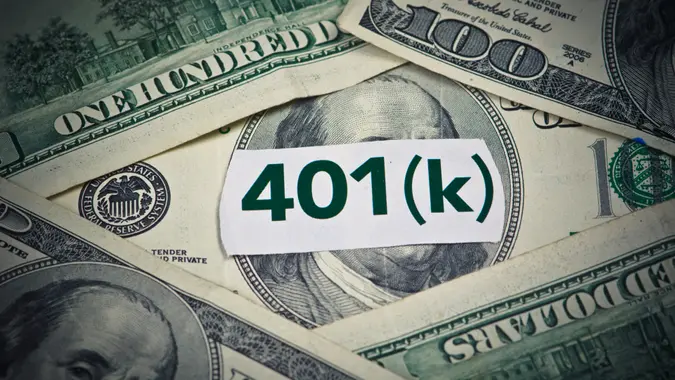I Asked ChatGPT To Plan My Entire Retirement: Here’s What It Said

Commitment to Our Readers
GOBankingRates' editorial team is committed to bringing you unbiased reviews and information. We use data-driven methodologies to evaluate financial products and services - our reviews and ratings are not influenced by advertisers. You can read more about our editorial guidelines and our products and services review methodology.

20 Years
Helping You Live Richer

Reviewed
by Experts

Trusted by
Millions of Readers
Planning retirement feels overwhelming, so I asked ChatGPT to create a complete roadmap. The AI delivered a surprisingly thorough plan covering everything from savings targets to healthcare costs.
I make $7,000 monthly with $4,000 in expenses, leaving $3,000 to allocate. ChatGPT used those numbers to build out a full retirement strategy spanning decades.
The 3 Phases of Retirement
ChatGPT broke retirement into three distinct stages based on activity levels and needs.
The “Go-Go Years” run from your 60s to mid-70s. This is when you’re active, traveling and pursuing hobbies. The AI said to budget extra during this phase for the experiences you’ve been waiting for.
The “Slow-Go Years” hit mid-70s to early 80s. Travel decreases, activities become more home-based, and leisure gets less ambitious. Spending typically drops during this phase.
The “No-Go Years” arrive in your 80s and 90s, with reduced activity but much higher healthcare costs. ChatGPT recommended planning for age 90-95 to avoid running out of money.
This phased approach made more sense than treating retirement as one long identical period. Your spending and needs genuinely change decade by decade. It’s basic, but not something I’ve seen talked about that often.
The Investment Math
ChatGPT recommended allocating 50% of my $3,000 surplus to investments. That’s $1,500 monthly going to 401(k) plans, IRAs or index funds.
At 6% annual growth, the AI calculated I’d have roughly $700,000 to $750,000 in 20 years, or around $1,050,000 in 25 years. That’s before counting employer matches, Social Security or other assets.
Using the 4% withdrawal rule, $1 million in savings generates about $40,000 annually or $3,300 monthly. Add average Social Security benefits of roughly $1,800 monthly, and you’re looking at $5,100 in retirement income.
The AI wrote that this would comfortably replace my current lifestyle, especially if major expenses like mortgages are paid off by then.
Where the Rest Goes
Beyond the $1,500 monthly investment contribution, ChatGPT allocated the remaining $1,500 strategically.
Twenty percent ($600) goes to cash savings for emergency funds and future travel. Another 20% ($600) targets debt paydown or big goal funds. The final 10% ($300) stays flexible as a buffer for unexpected costs.
This distribution felt more realistic than dumping everything into retirement accounts. You need liquidity for emergencies and flexibility for life between now and retirement.
The Healthcare Reality Check
ChatGPT didn’t sugarcoat healthcare costs. Before age 65, you’ll need ACA marketplace coverage or employer plans if retiring early. After 65, Medicare covers hospital and medical but not dental, vision or hearing.
The AI recommended budgeting around $6,000 yearly per person for Medicare premiums and out-of-pocket costs. That’s $500 monthly just for healthcare in retirement.
Long-term care was another concern. ChatGPT wrote that 70% of retirees need some level of care, suggesting either long-term care insurance, hybrid life/LTC policies or earmarked savings to cover it.
Tax Strategy Matters
The AI emphasized using tax-advantaged accounts but diversifying between pretax 401(k) plans, Roth IRAs and taxable accounts. This gives flexibility in retirement to manage tax brackets strategically.
ChatGPT recommended planning Roth conversions during lower-income years before Social Security kicks in. It also flagged required minimum distributions starting at age 73, which can push you into higher tax brackets if not planned for.
Lifestyle Planning Questions
ChatGPT asked questions I hadn’t considered. Where do you want to live? Will you stay put, move to a lower-cost state or retire abroad? Do you want to help kids or grandkids with college or weddings?
The AI recommended aiming to have your mortgage fully paid off before retirement and budgeting extra for trips and hobbies in your 60s and 70s while you’re still active.
These lifestyle questions matter as much as the numbers. You can have $2 million saved but be miserable if you’re stuck somewhere you hate or feel obligated to support family members financially.
The Action Steps
ChatGPT laid out immediate priorities: Max out retirement accounts, build six to 12 months emergency savings, pay down high-interest debt, get adequate insurance coverage and start tracking expenses with retirement in mind.
The “test-drive a retirement budget” suggestion was smart. Try living on what you think your retirement income will be for a few months to see if it’s actually realistic or needs adjustment.
What It Got Right
The phased retirement approach made sense. So did diversifying between different account types for tax flexibility. The healthcare cost estimates aligned with what financial planners typically quote.
Breaking down exactly where my $3,000 surplus should go eliminated decision fatigue. Having specific percentages made it actionable rather than theoretical.
What It Missed
ChatGPT couldn’t account for my specific risk tolerance, family situation or personal goals. The plan assumed I want a traditional retirement, but maybe I want to work part time doing something I love instead.
The AI also didn’t address inflation’s impact on that $1 million target. A million dollars in 25 years won’t buy what it does today, though the 6% growth rate presumably accounts for some of that.
Estate planning got mentioned but not detailed. If leaving money to heirs matters to you, that changes the withdrawal strategy significantly. Of course, there’s always the option to ask ChatGPT to elaborate when making your own plan!
The Bottom Line
ChatGPT created a solid retirement framework in minutes that would cost hundreds of dollars from a financial advisor. The structure works, the math checks out and the action steps are clear.
But AI can’t replace personalized financial advice that considers your unique situation, values and goals. Use ChatGPT’s plan as a starting template, then adjust based on what actually matters to you.
The biggest value wasn’t the specific numbers, it was getting me to think through retirement systematically rather than vaguely hoping things work out. That alone made asking ChatGPT worth it.
 Written by
Written by  Edited by
Edited by 

























